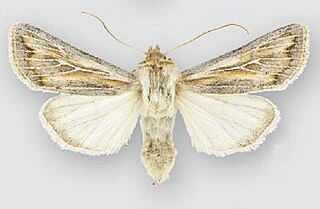Related Research Articles

Caldwell Parish is a parish located in the U.S. state of Louisiana. As of 2020, its population was 9,645. The parish seat is Columbia.

Mozilla Firefox, or simply Firefox, is a free and open-source web browser developed by the Mozilla Foundation and its subsidiary, the Mozilla Corporation. It uses the Gecko rendering engine to display web pages, which implements current and anticipated web standards. In November 2017, Firefox began incorporating new technology under the code name "Quantum" to promote parallelism and a more intuitive user interface. Firefox is available for Windows 10 or later versions, macOS, and Linux. Its unofficial ports are available for various Unix and Unix-like operating systems, including FreeBSD, OpenBSD, NetBSD, illumos, and Solaris Unix. It is also available for Android and iOS. However, as with all other iOS web browsers, the iOS version uses the WebKit layout engine instead of Gecko due to platform requirements. An optimized version is also available on the Amazon Fire TV as one of the two main browsers available with Amazon's Silk Browser.

Michael James Massimino is an American professor of mechanical engineering at Columbia University and a former NASA astronaut. He is the senior advisor of space programs at the Intrepid Sea, Air & Space Museum.

Explorer Scouts, frequently shortened to Explorers, is the fifth section of The Scout Association in the United Kingdom for 14- to 18-year-olds. The section was introduced in 2001 and formally launched in February 2002, alongside Scout Network, to replace the former Venture Scout section for fifteen-and-a-half to twenty-year-olds.

The Cascadia movement is a bioregional independence movement based in the Cascadia bioregion of western North America. Potential boundaries differ, with some drawn along existing political state and provincial lines, and others drawn along larger ecological, cultural, political, and economic boundaries.

Copablepharon is a genus of moths of the family Noctuidae.

Protogygia comstocki is a moth of the family Noctuidae. It is found in the White Sands National Park, Otero County, New Mexico as well as the Hanford Central and Wahluke dunes in Washington.
Agrotis gravis is a moth of the family Noctuidae. It is found from British Columbia, south to California.

Copablepharon grandis, the pale yellow dune moth, is a moth of the family Noctuidae. The species was first described by Strecker in 1878. It is found in North America from southern Alberta east to south-western Manitoba, the eastern parts of South Dakota, North Dakota and Iowa, west to California and south to southern Arizona, New Mexico and western Texas.
Copablepharon longipenne, the dusky dune moth, is a moth of the family Noctuidae. The species was first described by Augustus Radcliffe Grote in 1882. It is found in North America from south-western Manitoba to southern Alberta, south to western Texas.

Euxoa comosa, the hairy euxoa moth, is a moth of the family Noctuidae first described by Herbert Knowles Morrison in 1876. It is found in western North America, except the Pacific coast, ranging east through the northern Great Plains, and in the Hudsonian zone to the Atlantic Ocean. It is found in every province and territory of Canada, except Nunavut.

Burnsius oileus, the tropical checkered skipper, is a species of skipper. It is found in the United States, south through the West Indies, Mexico and Central America to Costa Rica. It was transferred to genus Burnsius in 2019, and was previously known as Pyrgus oileus.

Amblyscirtes vialis is a butterfly of the family Hesperiidae. It is found from British Columbia east across southern Canada to Maine and Nova Scotia, south to central California, northern New Mexico, Texas, the Gulf states and northern Florida.

Marimatha nigrofimbria, the black-bordered lemon moth, is a moth of the family Noctuidae. The species was first described by Achille Guenée in 1852. It is found in North America east of the Rocky Mountains and in Arizona and California.

Callophrys augustinus, the brown elfin, is butterfly of the family Lycaenidae. It is found from Newfoundland north and west through the northern United States and the prairie provinces to Alaska. To the south it ranges in Appalachian Mountains to northern Georgia and northern Alabama, further south through the western mountains to northern Baja California in Mexico. Subspecies iroides is known as the western elfin.

Satyrium acadica, the Acadian hairstreak, is a butterfly of the family Lycaenidae. It is found in North America from British Columbia east to Nova Scotia and south to Idaho, Colorado, the northern Midwest, Maryland, and New Jersey.

Copablepharon canariana is a species of moth in the family Noctuidae. The species was described by James Halliday McDunnough in 1932. It is found in North America.

Copablepharon robertsoni is a species of cutworm or dart moth in the family Noctuidae. It is found in North America.
References
- ↑ "Copablepharon absidum Harvey, 1875". www.gbif.org. Retrieved 2020-10-29.
- ↑ "NatureServe Explorer 2.0". explorer.natureserve.org. Retrieved 2020-10-29.